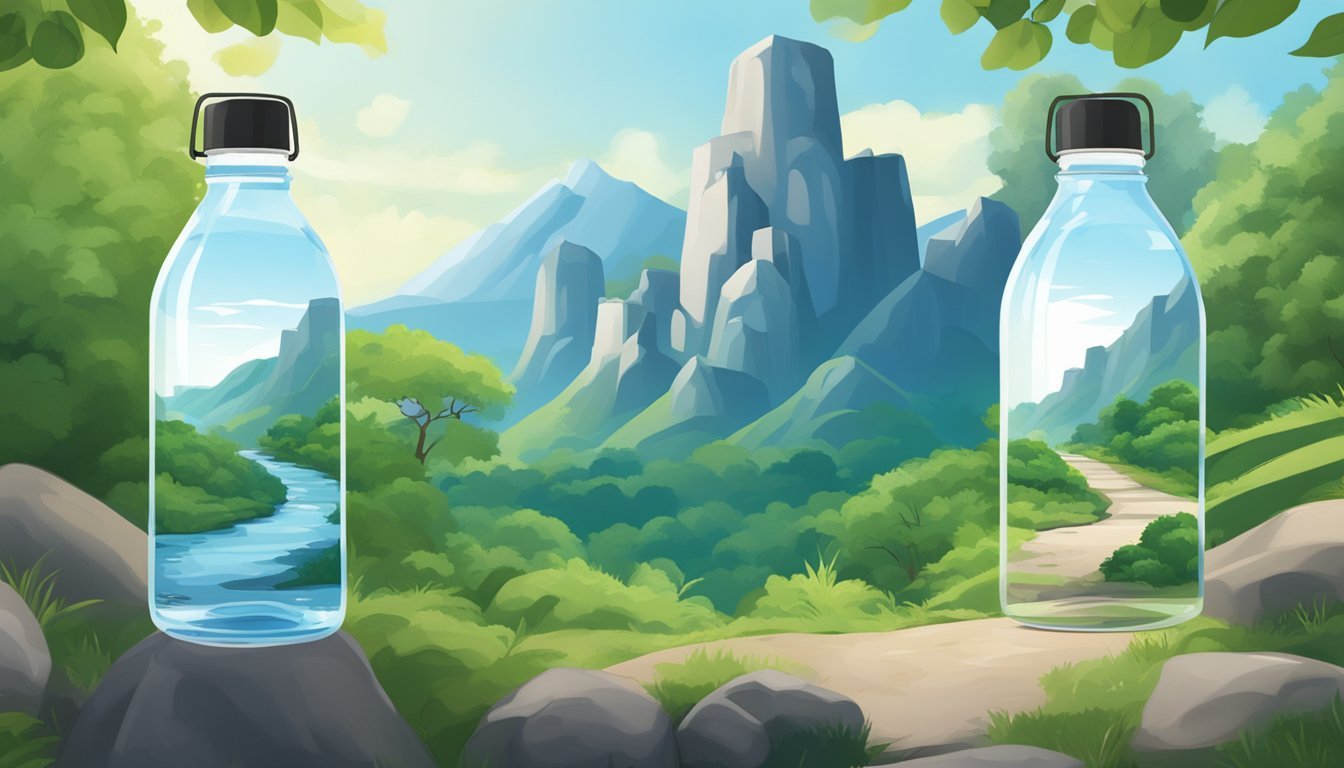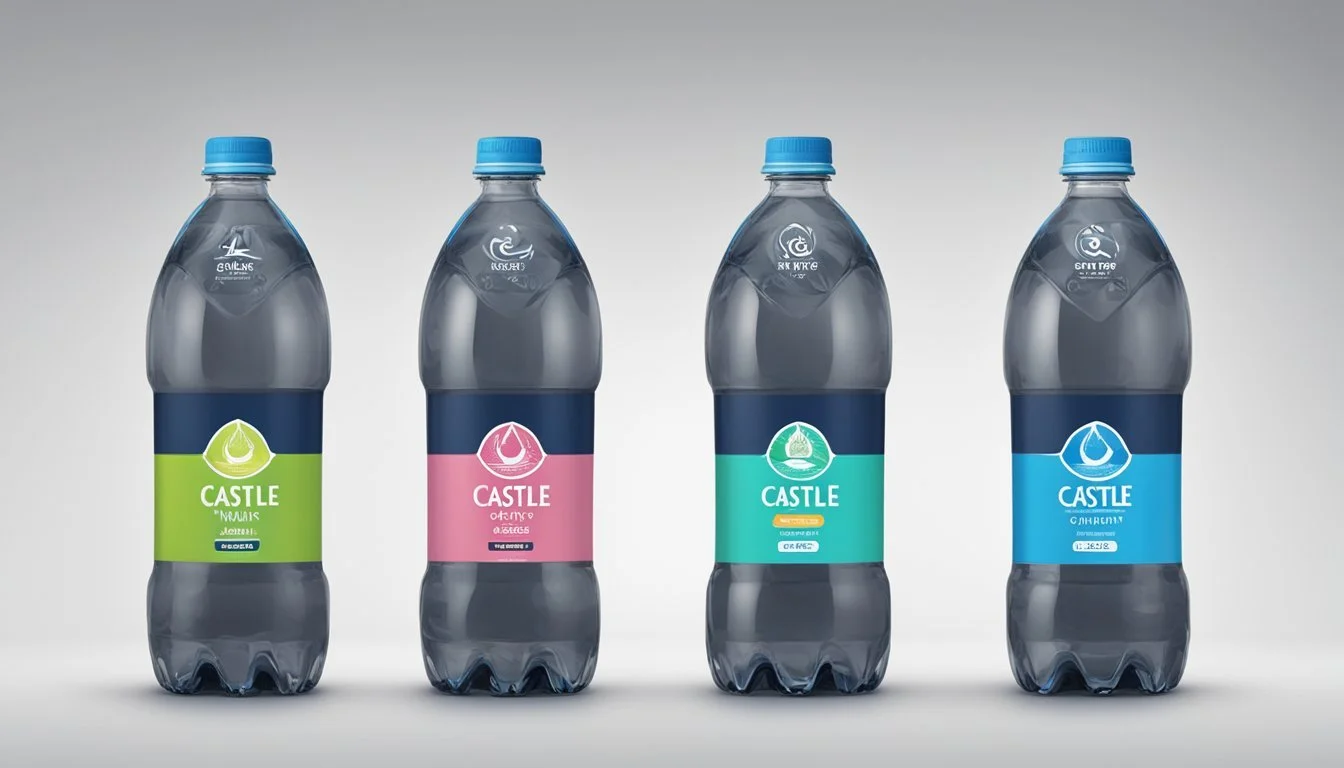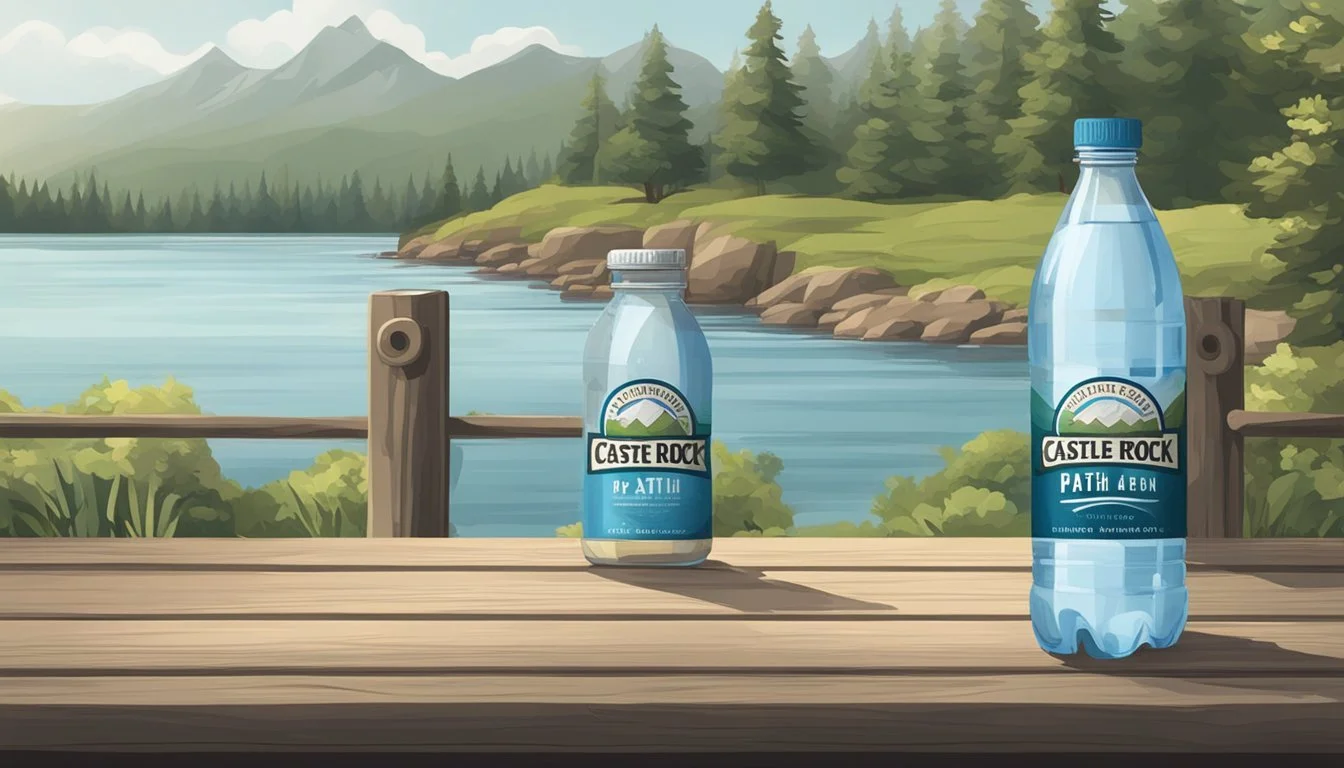Castle Rock vs. Path
Which Bottled Water is Better for You?
When it comes to bottled water, consumers often find themselves weighing the pros and cons of different brands to determine which is worth their purchase. Castle Rock and Path are two well-known names in the industry, each with its own loyal following. Both companies claim to offer pure, refreshing water, but how do they truly compare?
Castle Rock sources its water from pristine springs in the heart of California, boasting a natural, clean taste that appeals to many health-conscious individuals. Path, on the other hand, emphasizes sustainability, offering reusable aluminum bottles that aim to reduce plastic waste. For those who prioritize environmental impact, Path's commitment to reducing plastic is a significant advantage.
Ultimately, the choice between Castle Rock and Path may come down to what matters more to the individual consumer. If taste and natural sourcing are top priorities, Castle Rock might be the better option. In contrast, those who are more sustainability-minded may lean towards Path for their reusable bottle initiative.
Overview of Castle Rock and Path Water Brands
Castle Rock Water and Path Water are two reputable bottled water brands with distinct origins and characteristics that set them apart in the competitive market.
History and Origin of Castle Rock Water
Founded in early 2012, the Castle Rock Water Company sources its water from the pristine Shasta Spring in Northern California. The company ensures its water undergoes a natural purification cycle, from ocean to rain and glacier to spring. The water is bottled in environmentally friendly glass containers, enhancing its appeal to eco-conscious consumers.
Thomas Greither, the founder, aimed to provide pure, invigorating water that harks back to the days when such quality was served in fashionable hotels like the Ritz-Carlton and Waldorf Astoria. Castle Rock Water is known for its refreshing and crisp taste, reflecting the purity of its source.
The Story Behind Path Water
Path Water is another significant player in the bottled water market, emphasizing sustainability and innovation. Originating in California, Path Water offers an aluminum bottled option aimed at reducing single-use plastic waste. This differentiates it from many other brands that rely on plastic packaging.
Path Water's mission revolves around creating a more sustainable future. The company encourages consumers to refill and reuse their bottles, promoting a culture of environmental responsibility. This commitment to sustainability, combined with their stylish and durable bottles, has helped Path Water gain popularity among eco-friendly consumers.
Both brands showcase a dedication to providing high-quality drinking water while addressing different consumer preferences and environmental concerns. Castle Rock focuses on heritage and natural purity, while Path Water champions sustainability and modern convenience.
Environmental Impact and Sustainability
Both Castle Rock and Path emphasize eco-friendly practices, although their approaches differ significantly. Castle Rock focuses on sustainable materials and recycling, while Path champions reusable bottles to minimize environmental impact.
Castle Rock's Eco-Friendly Initiatives
Castle Rock has adopted a variety of environmentally friendly measures. One standout effort is their use of recycled glass for their bottle production. This choice reduces the need for new raw materials and lessens the carbon footprint linked with glass manufacturing. Additionally, Castle Rock prioritizes energy-efficient practices in their production facilities.
They also actively participate in local environmental programs, aiming to increase community awareness about sustainability. Their transparency is noteworthy; Castle Rock regularly publishes reports on water quality and environmental impact, further showcasing their commitment to sustainability.
Path's Reusable Bottle Approach
Path takes a distinct path by promoting a reusable bottle model. Unlike traditional bottled water companies, Path encourages consumers to refill their bottles instead of discarding them after a single use. The bottles are crafted from environmentally friendly materials, designed to withstand multiple refills, effectively reducing plastic waste.
Moreover, Path incorporates modern design elements, making their bottles convenient to carry and appealing to eco-conscious consumers. Their approach not only saves raw materials but also significantly cuts down on the carbon emissions associated with bottle production. This reuse strategy is central to Path's mission of minimizing environmental impact.
Water Source and Natural Purity
Both Castle Rock and Path focus on ensuring high-quality, pure water sources for their bottled water. Their processes highlight their commitment to natural purity and sustainability.
Castle Rock: Mountain Spring Water
Castle Rock sources its water from a natural spring in the Mount Shasta region. The water undergoes a natural purification cycle from ocean to rain, passing through glaciers and finally emerging from Shasta Spring. This process contributes to the water's high purity and mineral content. The maintenance of this cycle ensures that the water remains free from contaminants. Castle Rock water stands out due to its natural origin and the reputation of Mount Shasta's pristine environment. The use of environmentally friendly glass bottles complements their sustainable practices.
Path's Eco-Friendly Filtering Process
Path utilizes an eco-friendly filtering process to purify its bottled water. They start with groundwater, ensuring it is sourced from sustainable and protected wells. The water then undergoes multiple stages of filtration, including reverse osmosis and UV light treatment. These steps remove impurities while retaining essential minerals, resulting in clean and refreshing tasting water. Path’s commitment to sustainability extends to its packaging, which is designed to be reusable and made from recyclable materials. Their focus on both water quality and environmental impact makes them a standout option for eco-conscious consumers.
Health and Water Quality
When comparing Castle Rock and Path bottled water brands, it is crucial to examine their mineral content, pH levels, and adherence to safety regulations. Understanding these factors helps determine which brand offers better health benefits and water quality.
Evaluating Mineral Content and pH Levels
Castle Rock and Path bottled water differ in their mineral content and pH levels, which can affect both taste and health. Castle Rock water is often sourced from natural springs and may contain minerals like calcium and iron. Testing shows variations in Total Dissolved Solids (TDS), indicating the presence of minerals necessary for bodily functions.
Path bottled water, often being purified, may have fewer minerals. Alkalinity is another factor; Castle Rock water usually has a slight alkaline pH, which some studies suggest can neutralize body acidity. In contrast, Path water may be close to neutral due to purification processes. pH tests show values around 7 for Path, whereas Castle Rock water may be slightly higher.
Safety Regulations and Water Quality Reports
Both water brands must comply with EPA and FDA regulations to ensure safe drinking water. The Safe Drinking Water Act mandates annual Water Quality Reports. According to recent reports, Castle Rock meets stringent standards, showing low levels of contaminants such as lead and other heavy metals. Path, being purified, also boasts high safety ratings.
Quality reports highlight Castle Rock water's natural sources, with fewer contaminants due to minimal processing. Consumers can check labels for water sources and cross-reference quality reports, such as those found on Consumer Confidence Reports (CCR). High compliance with regulations ensures both brands provide safe and reliable drinking water, though the natural minerals in Castle Rock may offer slight health advantages.
Taste Profile and Consumption Experience
Castle Rock and Path bottled waters provide distinct taste profiles and consumption experiences, catering to different consumer preferences for still and sparkling water.
Assessing the Flavor of Castle Rock and Path Water
Castle Rock is sourced from Shasta Springs and offers lightly carbonated spring water. It is known for its crisp, clean, and refreshing taste, attributed to naturally occurring minerals. The carbonation in Castle Rock adds a slight effervescence that enhances its overall flavor.
Path water, by contrast, has a more neutral profile. It is designed to offer refreshing hydration without a distinct mineral taste. This makes it suitable for consumers who prefer their water flavorless and straightforward.
The differences in these flavor profiles come down to Castle Rock's light carbonation and mineral content versus Path's neutral and still water properties.
Consumer Preferences for Still vs. Sparkling Water
Consumers’ choices between still and sparkling water significantly influence their bottled water preferences. Castle Rock, with its sparkling option, caters to those who enjoy the effervescence and slight tangy flavor of mineral-rich waters. Its slightly carbonated nature offers a unique experience compared to regular still water.
Path, as a still water, appeals to those looking for a simple, clean hydration experience without the added bubbles. This makes it a versatile option for various uses, such as during physical activities, meal accompaniments, or long-term hydration throughout the day.
The deciding factor for many is whether they seek the refreshing fizz of sparkling water or the straightforwardness of still water. This choice impacts their appreciation and overall consumption experience with bottled water.
Packaging and Convenience
Both Castle Rock and Path offer unique packaging options that emphasize sustainability and ease of use, making them appealing to eco-conscious consumers and those seeking portability.
Castle Rock's Use of Glass Bottles
Castle Rock opts for glass bottles, which provide a premium feel and keep the water taste-free of contaminants. Glass is 100% recyclable and doesn’t degrade in quality over time, making it a sustainable choice. The bottles are often heavier, which might be a consideration for users seeking mobility.
Additionally, glass bottles are not prone to leaching chemicals, ensuring that the water remains pure. However, they are more fragile, raising the risk of breakage. For those looking for a luxurious and environmentally friendly option, Castle Rock’s glass packaging is commendable.
Portability of Path's Aluminum Bottles
Path uses aluminum bottles that are designed for on-the-go convenience. Aluminum is lighter than glass, making it a more portable option for active individuals. These bottles are also reusable, promoting reduced single-use plastic consumption. Path's design includes a screw-top lid, which ensures the bottle can be securely closed.
One notable benefit of aluminum is its resilience. It withstands drops and impacts better than glass, making it ideal for outdoor activities and travel. Path’s focus on reusability aligns with the growing trend towards sustainable consumption choices, offering a practical alternative to single-use plastic bottles.
Comparative Cost Analysis
When comparing Castle Rock and Path bottled waters, it's essential to consider their price points and whether the higher cost of some premium brands is justified by their quality and benefits.
Evaluating the Price Point of Each Brand
Castle Rock is known for its naturally sourced water and commitment to high-quality standards. Typically, Castle Rock water is placed at a higher price point due to its premium positioning, often ranging from $2 to $3 per bottle. This is attributed to the source and ethical practices in its production process.
Path, on the other hand, markets itself as a sustainable choice, often using reusable packaging. Prices for Path water generally sit between $1.50 to $2.50 per bottle. This reflects its balance of sustainability and affordability, targeting consumers who are ecologically conscious but still price-sensitive.
Brand Price per Bottle Castle Rock $2 - $3 Path $1.50 - $2.50
Is Premium Water Worth the Expense?
The question of whether premium water like Castle Rock is worth a higher price hinges on several factors. Quality and sourcing practices are major considerations. Castle Rock offers water sourced from natural springs, ensuring minimal contaminants and a high mineral content, which can justify its expensiveness for some consumers.
Path's lower price does not necessarily indicate lesser quality but reflects its efficiency and sustainable packaging methods. For eco-conscious consumers, the reduced environmental impact of Path's reusable bottles provides added value. Both brands meet high standards of water quality, but Castle Rock's premium pricing caters more to consumers prioritizing natural purity and exclusive sourcing.
In summary, the comparative cost analysis reveals that the choice between Castle Rock and Path depends largely on what consumers value more—premium natural sourcing or sustainable practices coupled with affordability.
Brand Reputation and Consumer Trust
Castle Rock and Path are both known for their distinct reputations and have garnered varying levels of consumer trust in the bottled water industry.
Public Perceptions and Market Position
Castle Rock is recognized for its crisp spring water, capturing the essence of natural, fresh hydration. Consumers appreciate its commitment to providing high-quality spring water, evident in reviews praising its clean flavor.
Path, on the other hand, brands itself as a more sustainable option. Their marketing emphasizes environmental consciousness, leveraging consumer desire for eco-friendly products. This approach resonates with a younger, environmentally-aware demographic, helping Path build a loyal customer base.
Word of mouth and online reviews significantly influence both companies' market positions. Castle Rock benefits from its reputation for purity, while Path gains traction through its sustainable practices.
Transparency in Sourcing and Quality Assurance
Castle Rock is transparent about its sourcing, proudly listing its origins from protected springs. This transparency attracts consumers valuing authenticity and natural sources. Regular reports and third-party testing bolster consumer trust in its high quality standards.
Path differentiates itself with a focus on sustainability. The company highlights its reusable aluminum bottles and ensures the water sourced is from reliable, clean locations. This commitment to sustainable practices and clear communication through detailed reports and newsletters builds trust among environmentally-conscious consumers.
Both brands use consumer feedback to refine their products and maintain high quality. Regular updates via email and social media keep their customer base informed, reinforcing trust in their commitment to quality and transparency.
Conclusion: Choosing the Right Bottled Water for You
Bottom Line: When deciding between Castle Rock and Path bottled water, consider what factors are most important to you.
Both Castle Rock and Path offer unique benefits. Castle Rock is praised for its pristine sourcing and mineral content. Path, on the other hand, is known for its eco-friendly packaging and reusability.
Health: For health-conscious individuals, Castle Rock's mineral-rich profile can be appealing. The natural minerals can contribute to overall well-being.
Environmentally Friendly: Path excels in environmental sustainability. Its reusable aluminum bottle significantly reduces plastic waste, an increasingly important consideration.
Taste: Taste is subjective, but Castle Rock often receives positive reviews for its crisp, clean flavor sourced from natural springs. Path also offers refreshing taste, aided by its purified processes.
Convenience: Convenience plays a crucial role in daily hydration choices. Path's durable, reusable packaging can be a big plus for those on the go, allowing for multiple refills.
Here's a quick comparison:
Attribute Castle Rock Path Health Benefits High mineral content Purified water Environmental Impact Natural bottles Reusable aluminum Taste Crisp, clean Refreshing Convenience Single-use Reusable, portable
She or he should weigh these factors based on personal priorities to make the best choice for their lifestyle.








